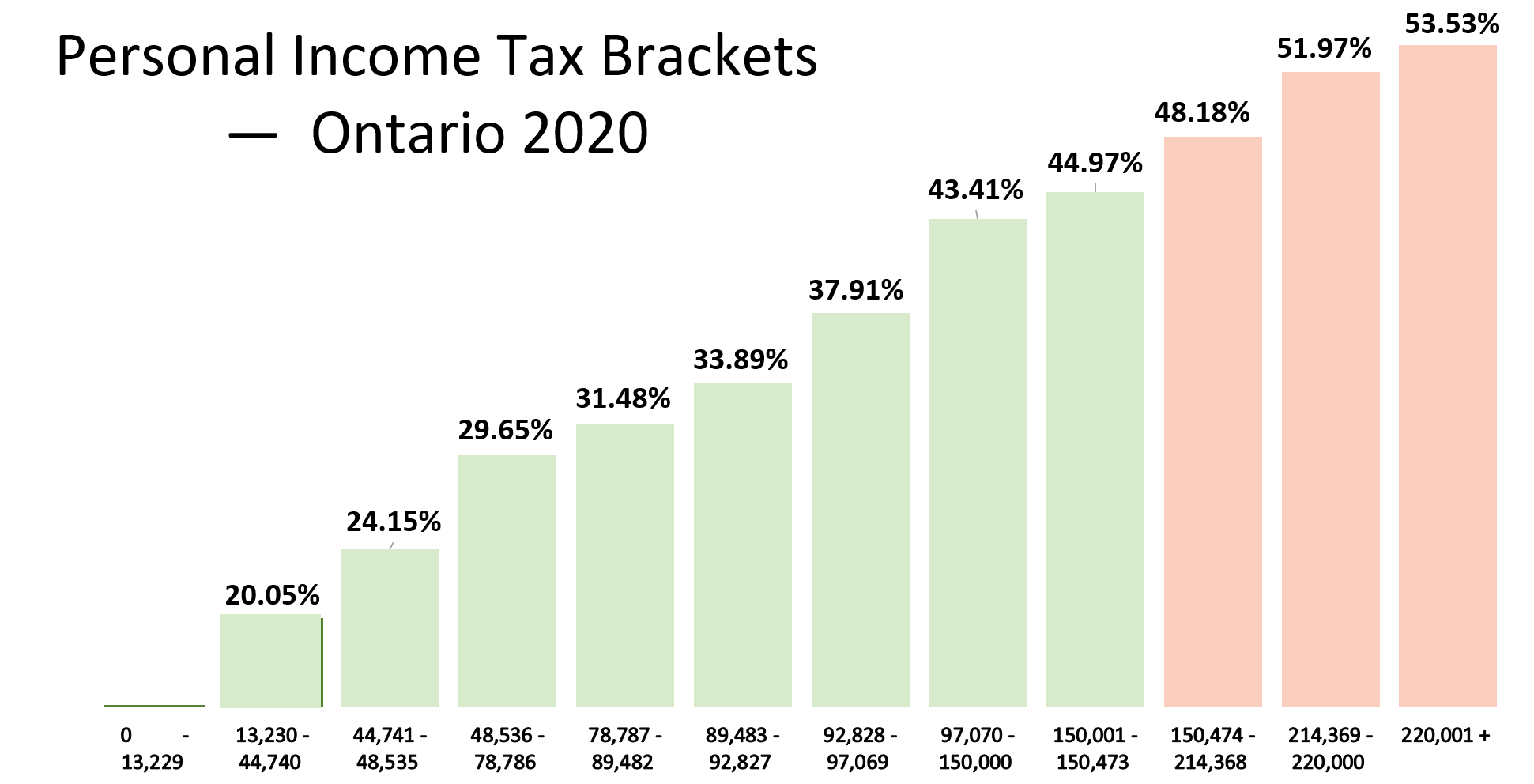Canada’s income tax system levies federal and provincial taxes on individuals. Canada uses a progressive (graduated) income tax system where your earnings are taxed at higher rates (tax brackets) as your income increases. Tax brackets determine the rate of tax paid for each additional dollar of income within the defined bracket/threshold. Those with lesser incomes pay a lesser percentage of taxes on the income earned in lower tax brackets, while those earning higher incomes pay a higher percentage of taxes on the income earned in higher tax brackets.
In addition to federal income tax, provincial taxes are imposed by the province or territory in which you reside or carry on business or professional activities. Therefore, a physician working in multiple provinces or territories will be required to allocate their professional earnings between the various provinces or territories. Provincial tax rates, tax brackets, and credits vary by province and are calculated using the taxable income calculated under federal income tax rules on schedules accompanying the T1 Individual tax return.
The taxable income is used to arrive at “Federal and Provincial Tax on Taxable Income” based on your taxable income, depending on which tax brackets your income falls into. For example, if your taxable income in Ontario is $450,000, that puts you in the top tax bracket of 53.53%. But you won’t pay 53.53% tax on all of the income earned. You will pay 53.53% tax on the income earned over $220,001, with a lower percentage of tax paid on income below $220,000 at the applicable tax bracket. After your tax is calculated you deduct from your calculated taxes owing any tax credits to calculate your personal income tax payable.
Tax Planning Strategies
Tax planning strategies can help you avoid paying tax in the higher income tax brackets and resulting in potential tax savings. Here are a few tax planning strategies that can take you from your current bracket to a significantly lower tax bracket:
- Income Splitting: This fundamental tax reduction strategy is used to reduce a family’s gross tax payable in a completely legal manner. This is achieved by a higher-income family member transferring a part of their income to a low-income family member such as by hiring the lower-income member or transferring tax credits from a lower-income member to the higher-income member see Salaries paid to Family Members
- Registered Retirement Savings Plan (RRSP): Since RRSP contributions are deductible, tax liabilities can be significantly reduced by investing in an RRSP. An added benefit of doing so is that your funds will also grow on a tax-deferred basis until you withdraw your investment.
- Tax-Free Savings Account (TFSA): Investing in a TFSA will ensure tax savings and also allow all your investment income in the TFSA to grow without having to pay any taxes. Future withdrawals are also not taxable.
- Maximize Tax Deductions and Credits: Being aware of all the tax deductions and credits that are available to you such as pension income credit, childcare expenses etcetera is pivotal to reducing the amount of taxes you have to pay. Also, consider donating to qualified charities.
- Withdrawing cash from your corporation efficiently: This is a great tax planning opportunity for business owners who can choose the amount they withdraw from their corporation. It’s best to determine a remuneration strategy based on expected corporate earnings, the amount of funds you need for personal living, and planned RRSP contributions to determine the funds you need to withdraw from the corporation to defer the personal tax payable on your income.
- Tax-Exempt Life Insurance: For people with a substantial amount of assets that they want to pass on to their next of kin, tax-exempt life insurance can cover your tax obligations. This will protect your assets from liquidation due to excessive taxes after your death.
Combined Ontario/Federal Income Taxes Payable by Individuals at Various Levels of Taxable Income — 2020
| Taxable Income | Marginal Tax Rate |
|---|---|
| 0 – $13,229 | 0.00% |
| $13,230 – $44,740 | 20.05% |
| $44,741 – $48,535 | 24.15% |
| $48,536 – $78,786 | 29.65% |
| $78,787 – $89,482 | 31.48% |
| $89,483 – $92,827 | 33.89% |
| $92,828 – $97,069 | 37.91% |
| $97,070 – $150,000 | 43.41% |
| $150,001 – $150,473 | 44.97% |
| $150,474 – $214,368 | 48.18% |
| $214,369 – $220,000 | 51.97% |
| $220,001 + | 53.53% |
.
Want help making the right decisions for your current or future year’s tax liability? MD Tax would be happy to help. Elliott Stone, CPA, CA, is the founder of MD Tax Physician Services in Toronto. Email us at: [email protected]
